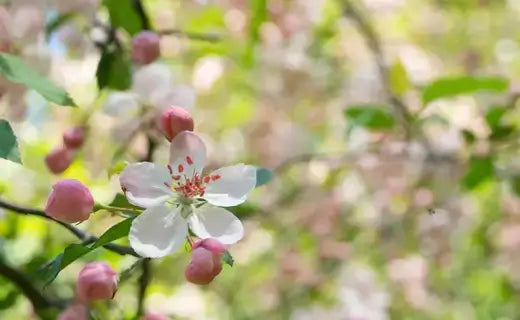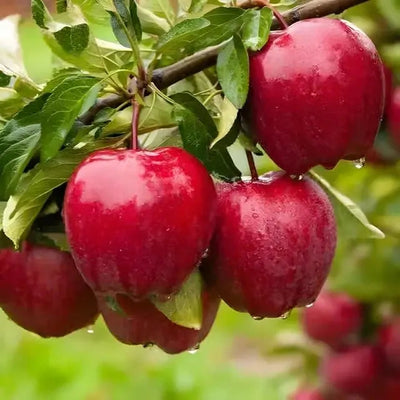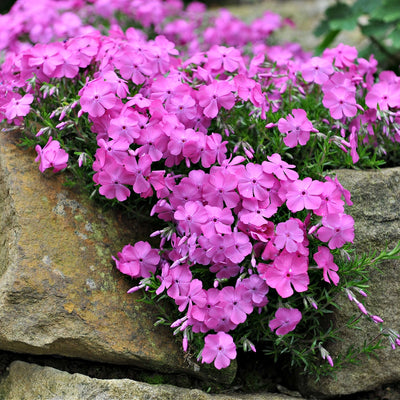Many Contributions
Crabapple trees, often overshadowed by their more prominent and commercially popular apple tree counterparts, are remarkable treasures in their own right. These hardy, ornamental trees offer a wealth of beauty, utility, and ecological significance that deserves recognition. In this exploration, we'll delve into the world of crabapple trees, discussing their role in cross-pollination with other apple trees, their status as an early pollen source for bees, the diverse fragrances they can emit, and their impressive drought tolerance.
Cross-Pollination with Apple Trees: Nature's Collaborative Effort
One of the most fascinating aspects of crabapple trees is their contribution to the propagation of their apple relatives. While crabapple trees belong to the same genus, Malus, as traditional apple trees, they often play a critical role in cross-pollination, benefiting both species. The compatibility between crabapple and standard apple trees allows for successful fertilization, increasing fruit production. Cross-pollination is the process where pollen from one tree's flowers fertilizes the ovaries of another tree, forming fruit. With their profusion of flowers, crabapple trees provide an abundant pollen source. Bees and other pollinators carry this pollen from the crabapple blooms to nearby apple trees, ensuring that the apple trees bear fruit. This relationship between crabapple trees and apple trees exemplifies the interdependence of various species in nature and underscores the importance of biodiversity in sustaining ecosystems.
Early Source of Pollen for Bees: Crucial for Pollinator Health
In addition to benefiting apple trees, crabapple trees are also vital for pollinators, especially honeybees. These trees bloom early in the spring when food sources for pollinators may be scarce. The profusion of fragrant blossoms on crabapple trees provides bees with a crucial source of nectar and pollen. Bees that forage on crabapple flowers not only gather sustenance but also help in the pollination process. The importance of early spring food sources for pollinators cannot be overstated, as it directly impacts the health and survival of bee populations. Healthy pollinators are essential for successfully reproducing many plants, including food crops. Crabapple trees contribute significantly to preserving biodiversity and sustaining ecosystems by offering sustenance when needed most.
Diverse Fragrances: A Feast for the Senses
Crabapple trees are not just providers of pollen and nectar; they also delight the senses with their diverse and captivating fragrances. The scent of crabapple blossoms can vary significantly among different cultivars, ranging from sweet and fruity to spicy or even slightly musky. The fragrant blooms attract pollinators, making crabapple trees a joy in gardens and landscapes. The aromatic diversity of crabapple trees allows gardeners and enthusiasts to select cultivars that suit their olfactory preferences. Whether you prefer the sweet perfume of 'Sugar Tyme' crabapples or the spicy notes of 'Red Barron,' there's a crabapple variety to satisfy your senses.
Drought-Tolerant Champions: Surviving Adverse Conditions
Crabapple trees are renowned for their resilience and adaptability to various environmental conditions, including drought. These trees have developed mechanisms to thrive in arid regions, making them an excellent choice for areas with limited water resources. One key feature that enhances their drought tolerance is their deep root system. Crabapple trees can extend their roots deep into the soil to access water sources other plants may not reach. Additionally, their small size compared to standard apple trees allows them to conserve moisture more efficiently.
Furthermore, many crabapple varieties have evolved to withstand harsh conditions, which makes them valuable for urban landscaping and ornamental use. Their ability to thrive in less-than-ideal environments reduces the need for extensive maintenance and irrigation, making them a sustainable choice for conscientious gardeners and landscapers.
Versatility in Ornamental Landscaping
Beyond their ecological importance and resilience, crabapple trees have carved out a special place in ornamental landscaping. Their versatility in design and aesthetic appeal makes them popular among gardeners and landscapers seeking to add beauty and functionality to outdoor spaces. Crabapple trees come in various shapes and sizes, offering options for every garden or landscape. Some cultivars have a compact, bushy growth habit, while others develop into graceful, vase-like shapes or columnar forms. The range of growth habits allows gardeners to select crabapples that fit seamlessly into their desired landscape design, whether a formal garden, a wildflower meadow, or a suburban backyard. The vibrant display of blossoms is undoubtedly one of the most striking features of crabapple trees. These trees burst into a riot of color in the spring, with flowers ranging from pure white to shades of pink, red, or even purple.
As the seasons progress, the blossoms give way to small, colorful fruit that can persist into late autumn, providing visual interest long after other flowering trees have finished their show. The fruit can range from tiny, berry-sized crabapples to larger, apple-sized varieties, adding a playful and ornamental element to the landscape. Crabapples also contribute to the overall health of the garden ecosystem. Their nectar-rich flowers attract bees and other pollinators like butterflies and hummingbirds.
Food Source
The fruit is a valuable food source for wildlife, including birds and small mammals. Planting crabapple trees can create a habitat that supports a diverse range of nature, fostering biodiversity within the garden. In addition to their visual and ecological benefits, crabapple trees are also low-maintenance. Their hardy nature means they require minimal care, making them an ideal choice for novice gardeners or those with busy lifestyles. They are generally resistant to most diseases and pests that plague other fruit trees, reducing the need for chemical interventions.
As the seasons change, so does the beauty of crabapple trees. In the fall, their leaves turn shades of yellow, orange, or deep red, adding warmth and vibrancy to the autumn landscape. Some cultivars exhibit attractive red or purple foliage throughout the growing season, enhancing their year-round appeal. Crabapple trees can also serve as living sculptures in the garden. Pruning and shaping these trees can create stunning, artistic forms that captivate the eye. Whether trained as espaliers against a wall, sculpted into elegant topiaries, or grown as standard trees with a single trunk, the possibilities for creative expression with crabapples are boundless.
Crabapple trees offer gardeners and landscapers a rich tapestry of beauty, ecological benefits, and versatility. Their adaptability to various growing conditions, aesthetic appeal throughout the year, and contribution to local wildlife make them valuable to any outdoor space. Whether you seek to enhance the sustainability of your garden or create a captivating focal point, consider the enduring charm of crabapple trees as they continue to flourish in the world of horticulture and ornamental landscaping. Crabapple trees are a testament to the wonders of nature's interconnections and adaptability. Their role in cross-pollination, provision of early pollen for bees, diverse fragrances, and drought tolerance make them exceptional trees with ecological and horticultural significance. These hardy trees contribute to the productivity of apple orchards and enrich our gardens and landscapes with their beauty and resilience. As we continue to appreciate and protect these versatile gems, we ensure a more sustainable and vibrant natural world for generations.



